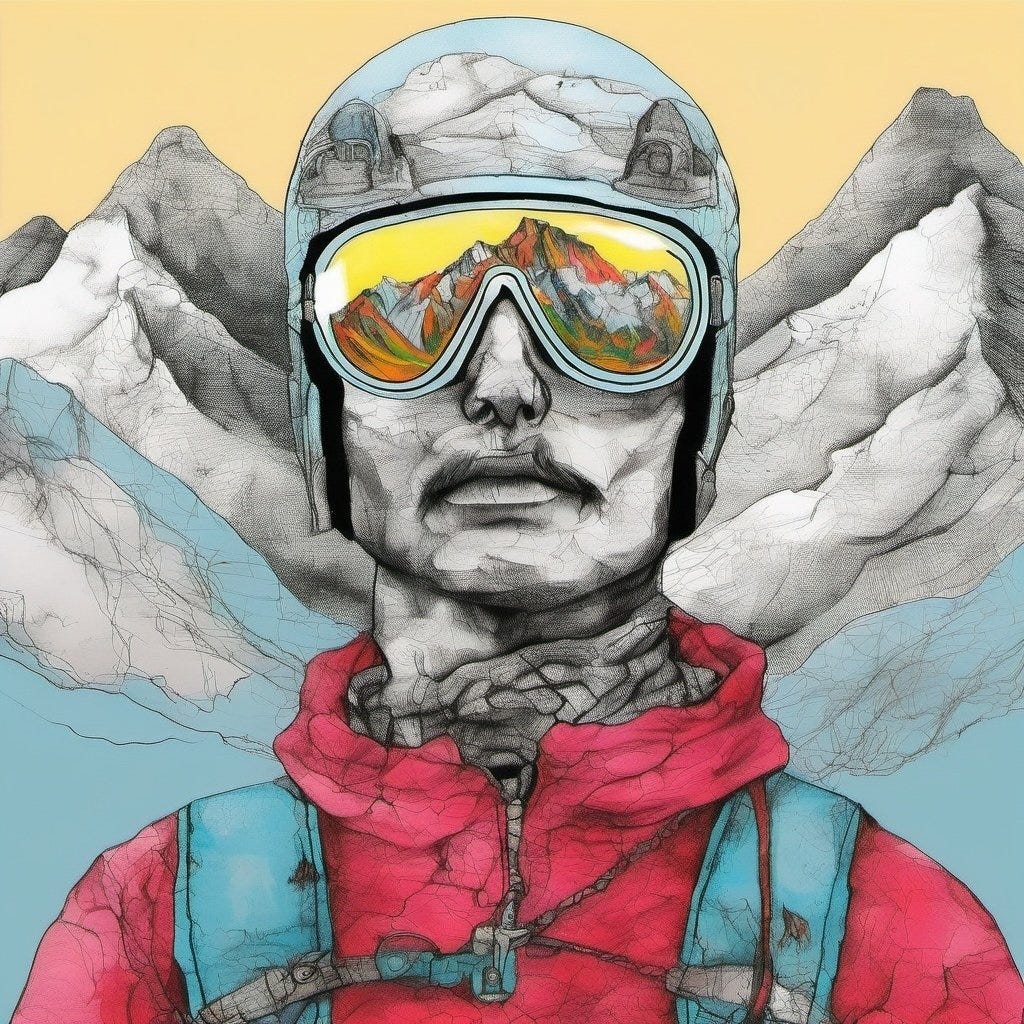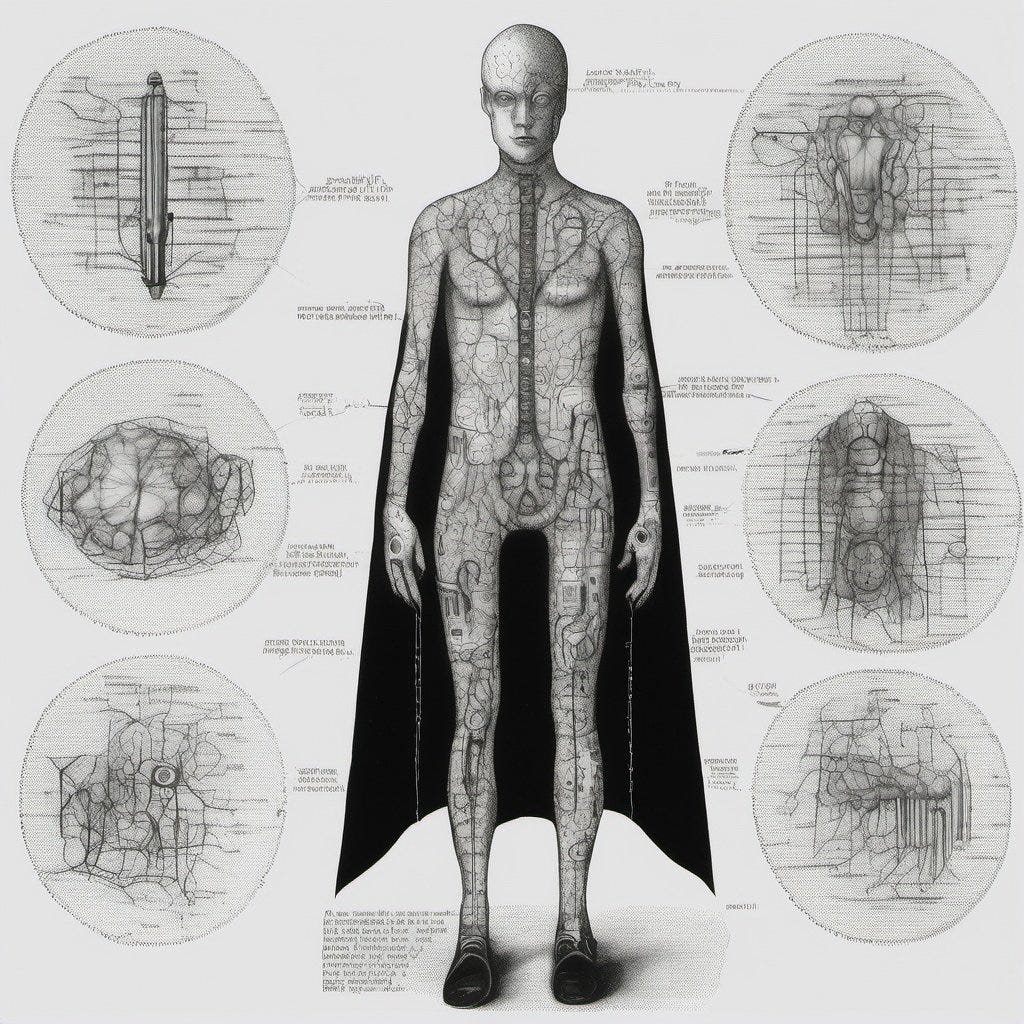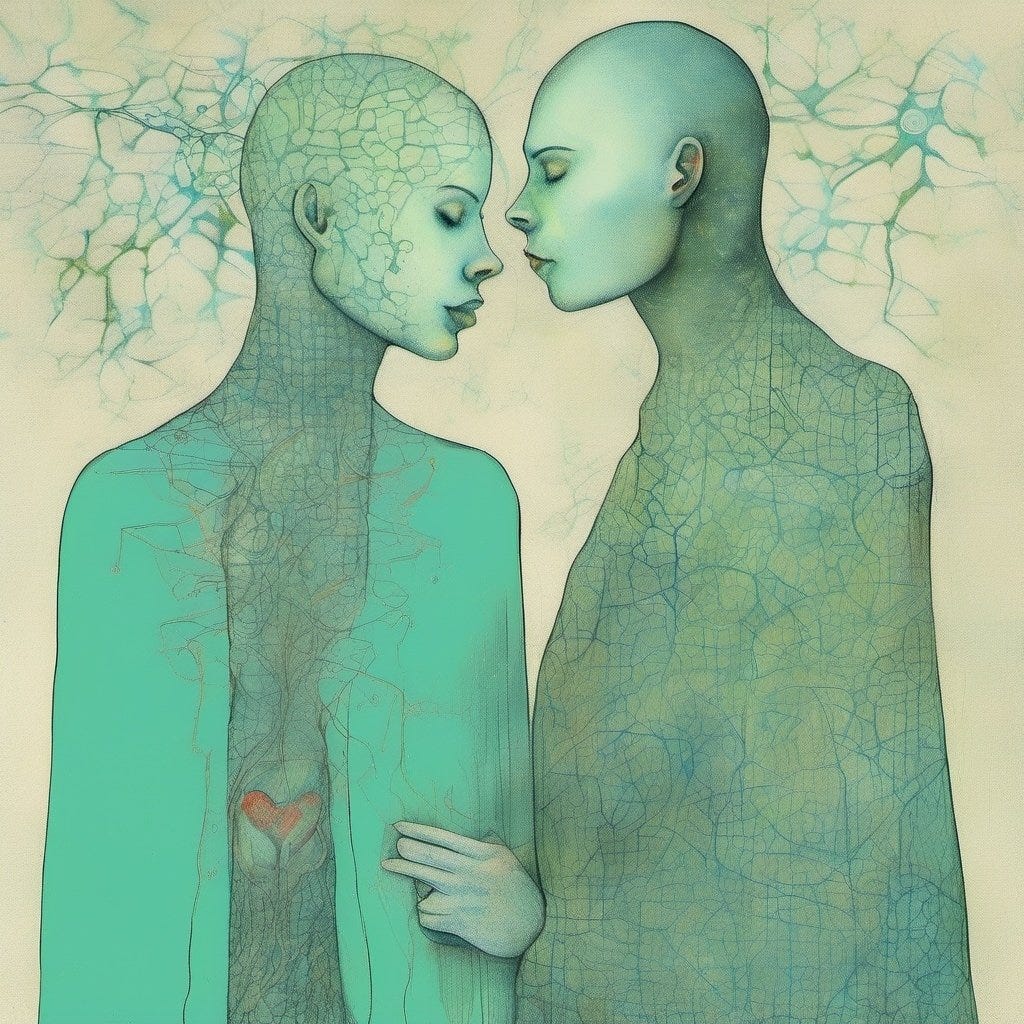The story below is my submission to the STSC Symposium, a monthly set-theme collaboration between STSC writers. The topic this time is “Habit”.
The word habit derives from the Latin words habere, which means "have, consist of," and habitus, which means "condition, or state of being." It also is derived from the French word habit (French pronunciation: [abi]), which means clothes. In the 13th century CE, the word habit first just referred to clothing. [Wikipedia]
And — exciting news!
I just published my second anthology, Errante. This story is part of the anthology so you’re getting a little preview of the vibe in the book. Please support my book and get a copy. I can also send you a signed copy if you contact me. Read more about this book and my one-woman show here. And — here is the book release video! Enjoy!
Forgiving the Habit
Stories from the head transplant industry
“Was it before or after they closed Mt. Everest?”
“Right after. What was it, fifty people dead that season? China and Nepal finally just had it with all the crazy Everest tourists and shut down the whole mountain. They got the billionaire mountain climber from that last ascent catastrophe. That’s also when they got, you know, what’s his name?”
“Right! Peltonen. The Finnish ice hockey player. Freaky neck injury in the final playoff game. They rushed him off to Atlanta to receive immediate spinal flush to try to save him.”
“Exactly, and that’s when things got weird. Complete silence about Peltonen. For months absolutely nothing. Hockey fans were sure it was sabotage and they had to bring in extra security to games. And then…”
“The interview.”
“Crazy. I don’t think I’ve actually felt anything that powerful before or after, you know? I don’t feel much, anymore. This. This was awful powerful. Do you remember what you felt?”
“Yeah, I kept looking at his neck, thinking how the hell did they shove the spinal cord into the new body? Did they open every vertebrae? And what about all those small thin long nerves? Did they find a way to merge donor and recipient neural pathways? And what were they doing to maintain homeostasis? Were they using the same protocol they did with synthetic organ systems? This, on the other hand, was about 97% biological. It was a horror movie. Frankly.”
“Long after I couldn’t wipe away the image of Peltonen sitting there, in that leather chair, and sort of clasping onto the arm rests as if his body was too light for him and he was trying to anchor himself so he wouldn’t lift off like a Zeppelin. He was drugged, don’t you think?”
“Definitely. Well, I mean, most likely. It was part of the adjustment protocol. It was one long chemistry experiment to keep the heads from going insane. Peltonen was calm by nature, so maybe it helped him.
Like I said, I kept staring at his neck. I wanted to see the scar, so I could make it real. It seemed unreal, you know? I experienced what they used to call a state of shock. I was overcome with a rush of — fear or terror? Of witnessing the unknown? It drained me of sanity and filled me with a chaos that hasn’t left me to this day. This was wrong. Peltonen was something else now. Something wrong, you know?”
“He was sitting in that mountain climber’s body. Inside the skin suit of some billionaire guy who had paid his way to the top of the world before he fell into a crevasse and lost most of his face. The climber stipulated in his will that he should be brought to the Living Institute in Atlanta and his body donated to research. There it was. That’s how it went.”
“And then they brought out the surgeons…”
“Yeah, I stopped watching a few minutes after that, because I knew they were going to start showing surgery videos, and I couldn’t handle that.”
“Peltonen himself said he’d refused to watch the surgery videos. He seemed stunned to be alive. He said something like: “I was given a second life I didn’t ask for.” Then they quickly cut to someone else and changed the subject. You can probably draw your own conclusions on how excited Peltonen was to wake up with a new body.”
“You think they matched Peltonen with the Everest guy? On purpose?”
“Not on purpose, but they had the Everest guy on ice so to speak, waiting for a match. I think someone at the Living Institute was keeping a close eye on global medical data centrals, and jumped on it when Peltonen got injured. These were the early days of successful and legal head transplants. It was still experimental, but there’s always been people with money who are ready to spend it. And, not to forget, the Living Institute was the only place in the world that had permits to complete full head transplants. All the others were illegal. Not that it stopped them of course. ”
“Remarkable. So when did you join the Living Institute?”
“About ten years later. I only stayed one Season, as they called it. You signed on for Seasons. Everything had different names back then. It was like a monastery. A medical monastery. Once in, you were locked in and had no contact with the outside until the Season was over. Non-disclosure agreements were no joke. I was recruited you know. The only reason I accepted was because I thought I might be able to make it more — humane?”
“By then they were good at it, right?”
“Yes, a lot of problems had been smoothed out by then. I had nothing to do with the neurosurgical or even psychological teams, but I worked on the Habit. The cloak. I was on the prototype team, and figured out the body-head-body mesh and the weaving technique and raw material for the actual Habit.
I’m not quite sure why it came so easily to me, the idea of a Habit. Early on it was considered a success if the mental equilibrium rating was around 60-70%. You know what that meant? The 30% who couldn’t stand it usually found a way to end themselves, unless they were prohibited by the Living Institute and forced to continue. Which of course drove them further down the equilibrium scale. I remember a little girl… no, I don’t think I will tell that story.
They required me to present it in front of the World Council and soon after that it became part of the Law. All head transplant individuals had to wear a Habit.”
“The Habit. Gosh, I wonder when I last saw one. I think in London, some years ago. At the airport. It was a couple.”
“A couple, huh? That’s quite unique. I actually only know of one couple in recent years. They all tend to move to Paris. They were probably en route there, is my best guess.”
“Really? They don’t tend to find each other and connect?”
“No. But they have built a community outside Paris, and there are still some of them left. It’s an old chateau that they’ve converted to a — for a lack of better words — monastery. Living the way they do, with the body they have, demands a tremendous amount of stability. Mind and body has to be reconciled. The gardens there are magnificent! My last assignment was a delivery of Habits to Paris. That was maybe twenty years ago.”
“The Habits they wore looked very similar to the one you designed years ago! How is that possible?”
“Well, the Law is still the same. They have to wear the Habit in public. The only globally accepted Habit is the one my team developed. They tried replicating it in AI factories, but the raw material is not available to them. The Living Institute Habits are unique and the patients find them soothing and helpful.”
“What soothes them?”
“The neural network. It helps mediate the head-body-head impulses. It lessens the misfiring risks with about 65%, which is remarkable. It lessens the psychological deterioration with about 85% in men and 84% in women. This is of course old data, but I suspect they haven’t figured out many improvements to the Habits since the Law was instituted.”
“Do you still follow the news from there?”
“I do. I keep an eye on it… You know, my daughter is getting married in July.”
“Your daughter? You mean Alicia? But I thought… but didn’t she? The accident?”
“My old contacts at the Living Institute found a really good match. She’s doing amazing! Really amazing! I’m so sorry I didn’t tell you right away. I don’t know what was holding me back. I was waiting for something I think. A perfect moment. And I sort of messed up. I’m sorry! I’m not quite myself these days. It’s been a lot to deal with.
But she’s getting married, and they’re happy. He is also, you know… They’re moving to Paris in August. They just got all the permits squared away…”
“This is incredible! Alicia alive! I know we haven’t met in a long time, but I wish you would’ve told me! And that she’s, she’s with the Living Institute and all! And you’re telling me she’s doing well? I remember her as a young girl! We went to Tahoe that summer and our kids played together! Has she changed? Much?”
“She has. I’ve programmed several Habits for her to try. I think she likes the latest one. She says it makes her body obey her better. She tells me things. Things that are bad. Sometimes, sometimes the body seems to have a will on its own. Probably fragments of neurons and nerve connections that are impossible to remove. The Habit helps with that.”
“How do you feel about all of this?”
“Ambivalent. Guilty. Scared. You know, my husband couldn’t handle it. He just couldn’t. I found him in the backyard, under the oak tree. It’s been hard. I protect her. I program new Habits when she hits a snag. Her fiancé is a good person. I am planning to leave when they move to Paris. I am going to vanish.”
“Vanish? Where?”
“I bought a place. It’s by a lake. I’m going there to ask for forgiveness.”
“Forgiveness for what?”
“I know it will come to me when I swim in the clear blue water. When I’m under the surface. Submerged. It will wash me and I will be forgiven.”
Thank you for reading! Press the heart button and write a comment! I appreciate all your support. Please consider subscribing and dropping a few bucks in the Venmo below.
NEW! Please buy Errante, my second sci-fi anthology and leave a review on Amazon and Goodreads.
OLD… No End Code (lower price), my first sci-fi anthology — free with KindleUnlimited.








